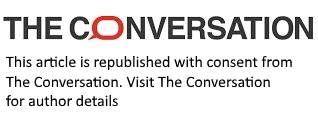Labor women make history by overtaking men in cabinet. So is the job done?
- Written by Elise Stephenson, Deputy Director, Global Institute for Women's Leadership, Australian National University
The Albanese government has achieved a striking gender equality milestone following its election for a second term.
For the first time in Australian history, there will be more women than men in federal cabinet.This comes more than 120 years after women were first allowed to stand for federal parliament, and decades after Labor established its gender quota strategy.
Taking into account the full caucus, women will comprise 56% of the Labor party room, a clear record.
Percentage of ALP women in House of Representatives and Senate
Further, having more women in parliament does not guarantee substantive representative or inclusive policy-making. While some research shows women tend to advocate on female issues, a higher number of women politicians does not automatically mean more feminist policy.
Full ministry
Taking into account other characteristics, Albanese’s first ministry was the most diverse in Australia to date. But he hasn’t made advances with his second frontbench.
The retirement of Linda Burney cuts the number of First Nations ministers to just one – Malarndirri McCarthy.
The demotion from cabinet of Ed Husic — the first Muslim elected to federal parliament — and Mark Dreyfus, who is Jewish, reduces the cultural and linguistic diversity of ministers.
Penny Wong is still the lone “out” LGBTQIA+ minister and there are currently no openly disabled people in the ministry.
The average age of frontbenchers is 51. Only two ministers are under 40 – Communications Minister Anika Wells and newcomer Sam Rae.
Of the 42 frontbenchers who make up the full ministry, 23 are men and 19 are women.
Across the parliament
Beyond gender, almost one quarter of Labor members in the lower house identify as culturally and linguistically diverse, 1% as LGBTQIA+, 2% with a disability and 2% as First Nations. In the Senate, almost one in seven identify as culturally and linguistically diverse, 6% as LGBTQIA+, 6% as First Nations and none with a disability.
This is the first election where Gen Z and Millennial voters made up a larger share of the electorate than Baby Boomers. Yet only three Labor parliamentarians are younger than 35.
Charlotte Walker is expected to win the third ALP senate spot in South Australia. This would make Walker, who turned 21 on election night, the first federal politician born in the new millennium.
More work to do
Despite the progress, it’s clear from a deeper analysis that parliament as a whole still doesn’t mirror the people it represents.
Roughly one quarter of Australians are born overseas, yet we’re not seeing this same diversity filter through to parliament.
Eight First Nations MPs and senators will sit in parliament, down from 11 in the previous parliament.
People with disability are underrepresented. They comprise over 20% of the population but are not yet elected to parliament in similar numbers.
Pinning all our hopes and dreams for better disability policy on the one or two people with disabilities in politics is unfair.
Diverse candidates
The Global Institute for Women’s Leadership assessed the number of candidates from diverse backgrounds – women, self identifying LGBTQIA+, CALD, disability and First Nations – who were preselected by the main parties for the election.
The results were:
- Greens 30%
- Labor 26%
- Coalition 24%
- Others (independents and minor parties) 12%
Parliament falls a long way short of reflecting the diversity of the electorate because not enough diverse candidates are being chosen to run for seats.
But for future elections, inspiration can be taken from Labor’s strong gains achieving, and surpassing, gender parity.
Authors: Elise Stephenson, Deputy Director, Global Institute for Women's Leadership, Australian National University





